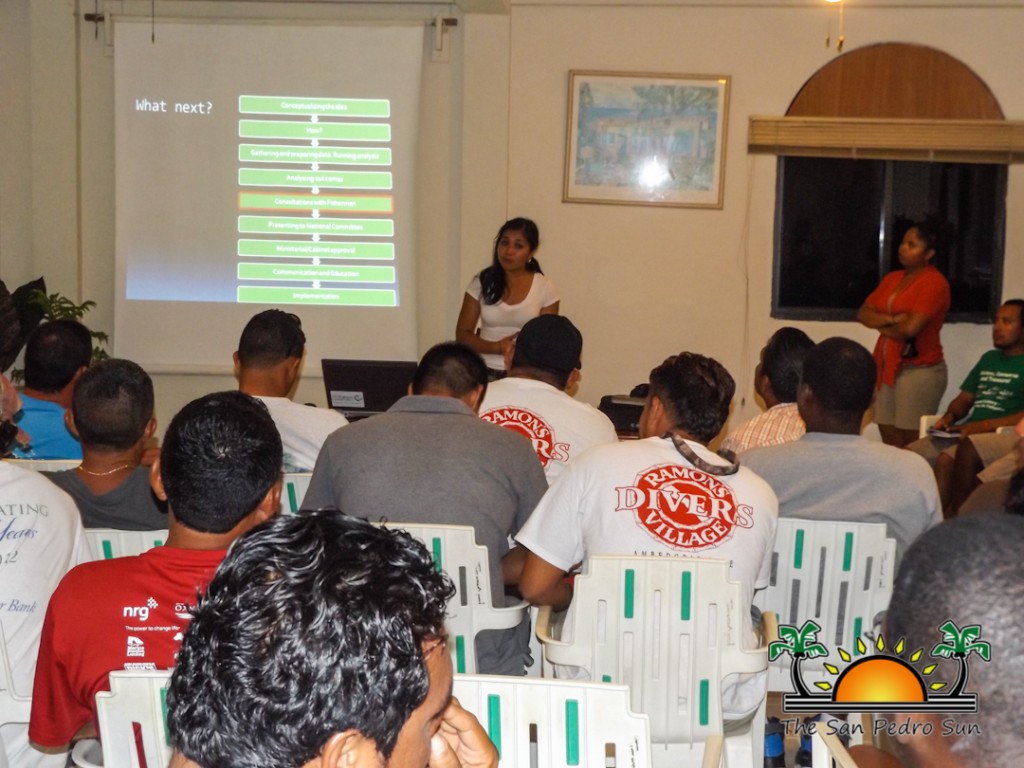The Coastal Zone Management Authority and Institute (CZMAI), Ministry of Forestry, Fisheries and Sustainable Development held the last of four public consultation sessions on Tuesday, September 1st at the Sun Breeze Hotel Conference room. The meeting was in lieu of the finalization of the Belize Integrated Coastal Zone Management (ICZM) plan. Mandated under Coastal Zone Management Act, the plan determines the suitability of coastal land use and outlines recommendations for sustainable development along the entire coastal zone in Belize. While still in its consultation stage, when completed the management plan will include the first three kilometers inland from the coastline of Belize and all cayes. The Integrated Management plan is divided into ten areas and looks at three scenarios of development over a 15 year period. One of the ten areas is Ambergris Caye and encompasses the entire island and surrounding flats, mangroves swamps, inland lagoons, the reef directly in front of the island and the seabed around the caye.
According to the president of the San Pedro Tour Guide Association, Billy Leslie, even though the plan seemed ready to be signed, it still needs some more exposure. “There are a lot of people out there that do not know about the project. In my view, they should do consultations in more areas so more people are aware of the plan. This plan that is being put together, especially by the Coastal Zone Management Authority involving the Forestry Department is one to question. First of all, Coastal Zone Management does not even have a boat to enforce the law. The Forestry Department do not go to coastal areas, as they deal more with matters deep in the forest, looking after the rosewood and mahogany. It is not that they do not want to, but the fact is that they have very limited resources. What we argue is that, if there is not sufficient man power or resources, then this plan of action for the sustainability of our coastal areas will simply not work, since there will be no adequate enforcement. A good example is all the massive construction happening on our island, mangroves are being cut left, right and center and the dredging is destroying the sea grass beds. There is not one coastal zone or forestry officer enforcing any law,” stated Leslie. The only solution Leslie believes will make this program work is the increase of man power and resources for the respective agencies, such as the Coastal Zone Management Authority and Institute, Forestry and Fisheries department.
According to Samir Rosado from the CZMAI, the need to reach out to as many people as possible is very important for them. “The process of the plan was initiated in 1998 but then reactivated in 2005. Then it was activated three years later in 2008 and since then the CZMAI has been working to finalize the process. In 2012, 2013, and finally in 2015 several public meetings were held in San Pedro, but the turnout was very poor. In consideration of the resources it takes to carry out consultations nationally, CZMAI did all that it could do to reasonable engage the community,” stated Rosado.
When it comes to the matter of resources, it is an issue for all government departments. According to Rosado, the plan does not offer a solution for these problems, but rather identifies it as one of the main issues affecting enforcement. “This is in line with the overall purpose of the plan, which includes identification of management gaps and action steps to address them. The plan also coordinates the different mandates of the various government agencies with respect to the coastal zone. It identifies clearly what mandates overlap in relation to certain costal resource use activities and identifies lead agencies and policies under which power stems from,” Said Rosado. He states that in the presentation, CZMAI does not have the authority to restrict activities within the coastal zone. Instead it offers a framework for the best and most sustainable way forward, in terms of coastal resource use through the many Coastal Management Guidelines and zoning schemes available. “Once the plan is legally endorsed and adopted, it will then become the official framework for coastal and marine use. Therefore, agencies will be responsible for carrying out recommended action steps and adhering to zoning schemes presented,” ended Rosado.
During this process CZMAI will be working with these agencies and the communities to ensure that the recommendations are being followed and are having the positive effects that were envisioned in the creation of the plan by stakeholders.
On the other hand moving forward, CZMAI will continue to carry out socialization and sensitization of the plan and what it will mean to the communities. However at this juncture CZMAI must continue with the process of getting the plan endorsed and adopted by the Government of Belize.

Share
Read more

